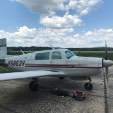Aircraft jacking using a weighted tail stand Vs using a cable winch
-
Members Online
- kortopates
- Peter T
- Brandt
- GeeBee
- Fly Boomer
- Beard
- MDMooney
- phrogpilot73
- GTO1969
- Aerospace
- Fritz1
- cbarry
- ysifly2
- toto
- Glen Davis
- Shadrach
- lithium366
- RescueMunchkin
- Ron McBride
- PT20J
- BrianWilkins
- MikeOH
- vorlon1
- navysix
- Kelpro999
- N201MKTurbo
- ArtVandelay
- TCC
- Sabremech
- McMooney
- Jbguns24
- PeteMc
- Pierre07
- PaulS
- dkkim73
- Ragsf15e
- alextstone
- bcg
- 201er
- KB4
- 802flyer
- Mac80
- StevenL757
- M20R
- Scott Ashton
- Jetpilot86


Recommended Posts
Join the conversation
You can post now and register later. If you have an account, sign in now to post with your account.